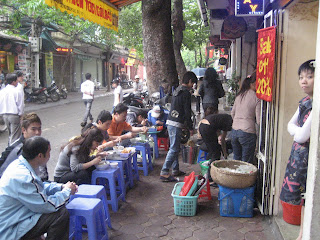Attitudes among Vietnamese Americans vary radically when it comes to the question of returning to their homeland. Some, like our friend, Tami, think it’s a terrible idea. They hate the government that took away everything and sent them to re-education camps – sometimes for years. They dislike their rapacious relatives who are only interested in what their rich American relatives can bring them when they come. They are still angry and grieving for the lives they lost when they climbed into a boat and set off for an uncertain future.
But, many Vietnamese Americans have a different take on returning. They see adventure or opportunity or the spirit of philanthropy. There is a lot to be said for checking out where you or your parents were born and to scoping out the landscape – human, cultural, and geographic. There is an intense curiosity and there are many reasons to return. Some are very personal, like meeting uncles, aunts, cousins or other family members who never left. Some are altruistic and involve decisions to help where it is obviously needed. Some return for an adventure or to get away from other pressures. They are all good reasons, but there seems to be a difference in what happens once they get here – and often it is gender related.
Yesterday’s Vietnam News, one of the two English language papers, contained an article, entitled Singular Comfort, by a young woman named Thu Anh. The gist of the article was skeptical, even cynical, about men in her young professional age group. In my limited experience this is a common lament. These young women see the men as uninterested in serious relationships at best and lazy predators at worst. The Viet Kieu women always point out that there are so many Vietnamese girls who are ready and willing to service the guys that there is very little incentive for the men to think about a serious relationship. It’s a sad comment on all three sides of that equation. It’s all about attitude.
































